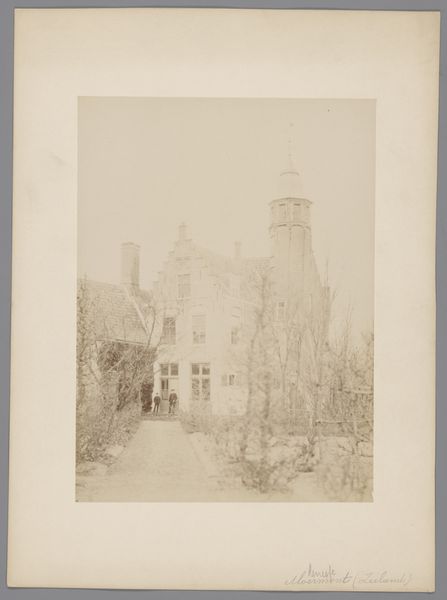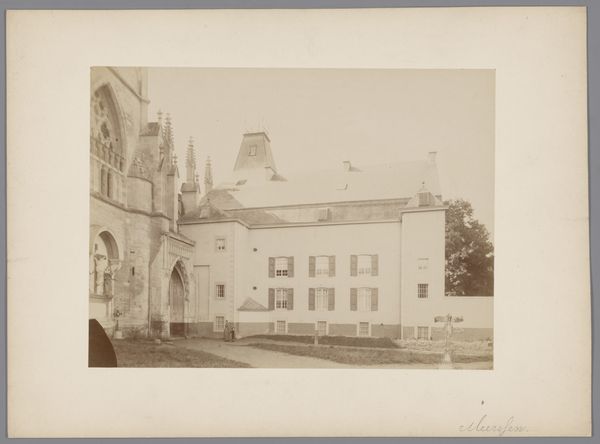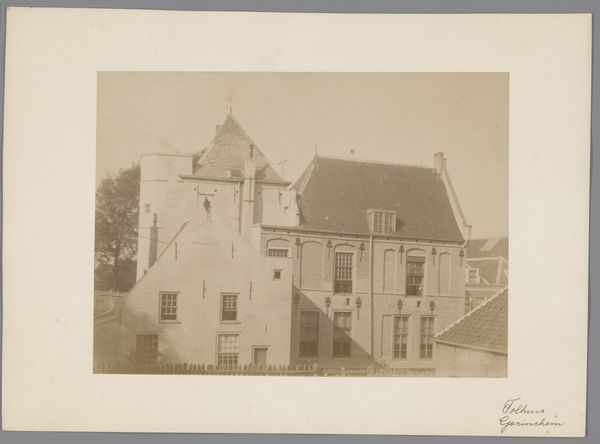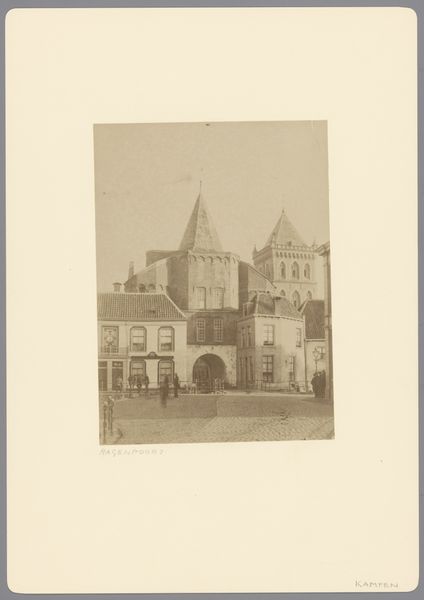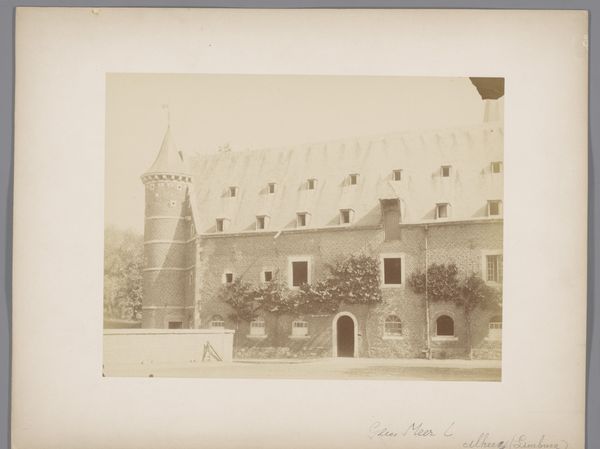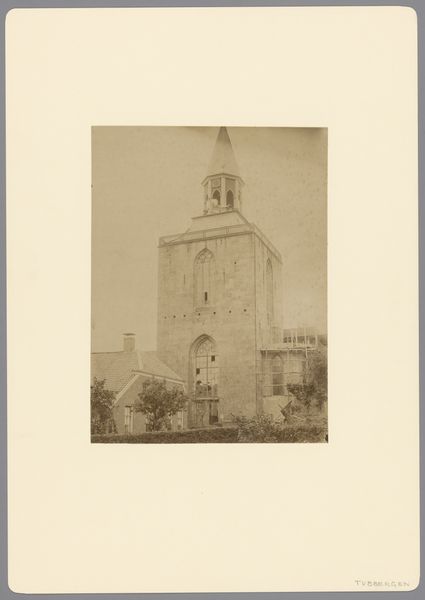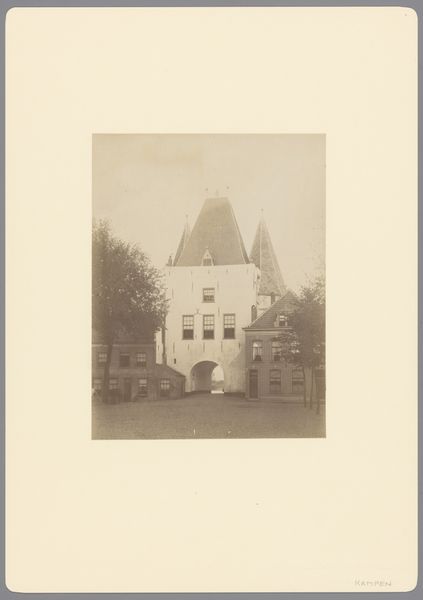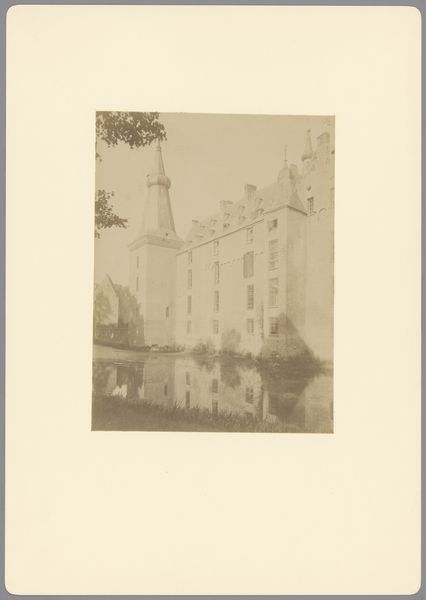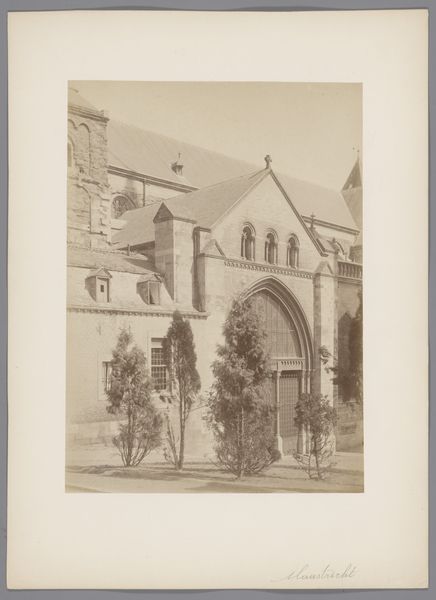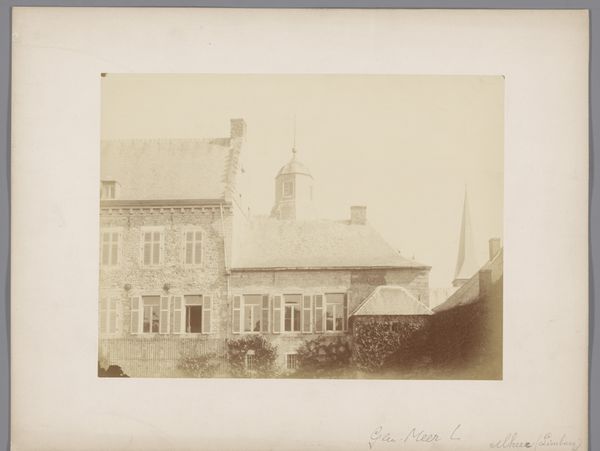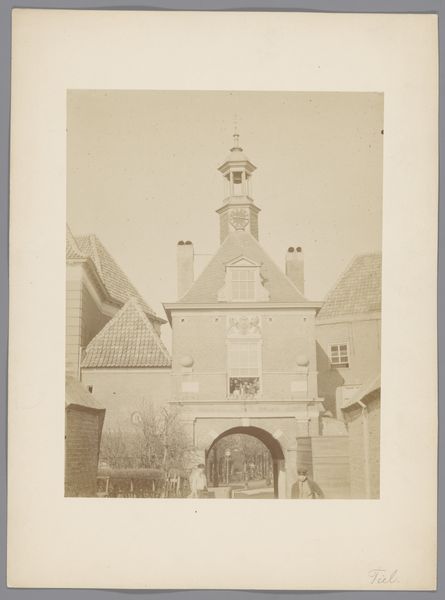
Dimensions: height 234 mm, width 176 mm
Copyright: Rijks Museum: Open Domain
Curator: What a striking image. Here we have "Hoofdhuis met toren van het Kasteel van Mheer," or, loosely translated, "Main Building with Tower of Mheer Castle." It's attributed to an anonymous photographer, produced sometime between 1890 and 1920. Editor: Immediately, it strikes me as a scene bathed in faded grandeur. Sepia tones lend an aura of the past, don’t they? It feels more like a stage set than a dwelling, really. What kind of emotional world do you think a place like this suggests? Curator: Castles always have layered meanings, don't they? As icons of power, security, but also enclosure. Note the solid, weighty construction; a classic representation of stability, a desire to project enduring legacy, all contradicted in this image by its being a historical document and a ruin...or soon will be. It's that tiny human figure standing off to the side. What statement does the placement of the figure make, do you think? Editor: Well, dwarfed! That's for sure. Completely outshadowed by this immense...thing. It feels representative of humans dwarfed by time. I wonder if whoever made it really meant for people to live happily ever after in the completed space. Or did they think this space and life here was simply more "monumental" for lack of a better word? Curator: You make a valid point about monumentality. In architectural photography of the era, we often see a desire to document and celebrate these grand structures, embedding notions of national identity and cultural heritage. So you find an ideal of who they should have been...not necessarily an accurate portrait of the people or the use to which the castle was intended. Editor: See, the windows here seem strangely ajar… hinting, perhaps, at stories left untold, rooms left unvisited? What really took place inside there over the course of so much time? Curator: A castle’s tower almost universally signifies vision, knowledge, protection—the all-seeing eye. Though slightly obscured by foliage in this photo, it reinforces the architectural intent. How well can we see history clearly? The shadows playing across the walls could equally veil or unveil mysteries, depending on how one views things. Editor: Well said. These buildings live through the humans who pass through and the plants that now surround the image. One more silent reflection from another generation, like the bush here has outgrown itself but now protects the building itself from its own ghosts, however present or absent.
Comments
No comments
Be the first to comment and join the conversation on the ultimate creative platform.
